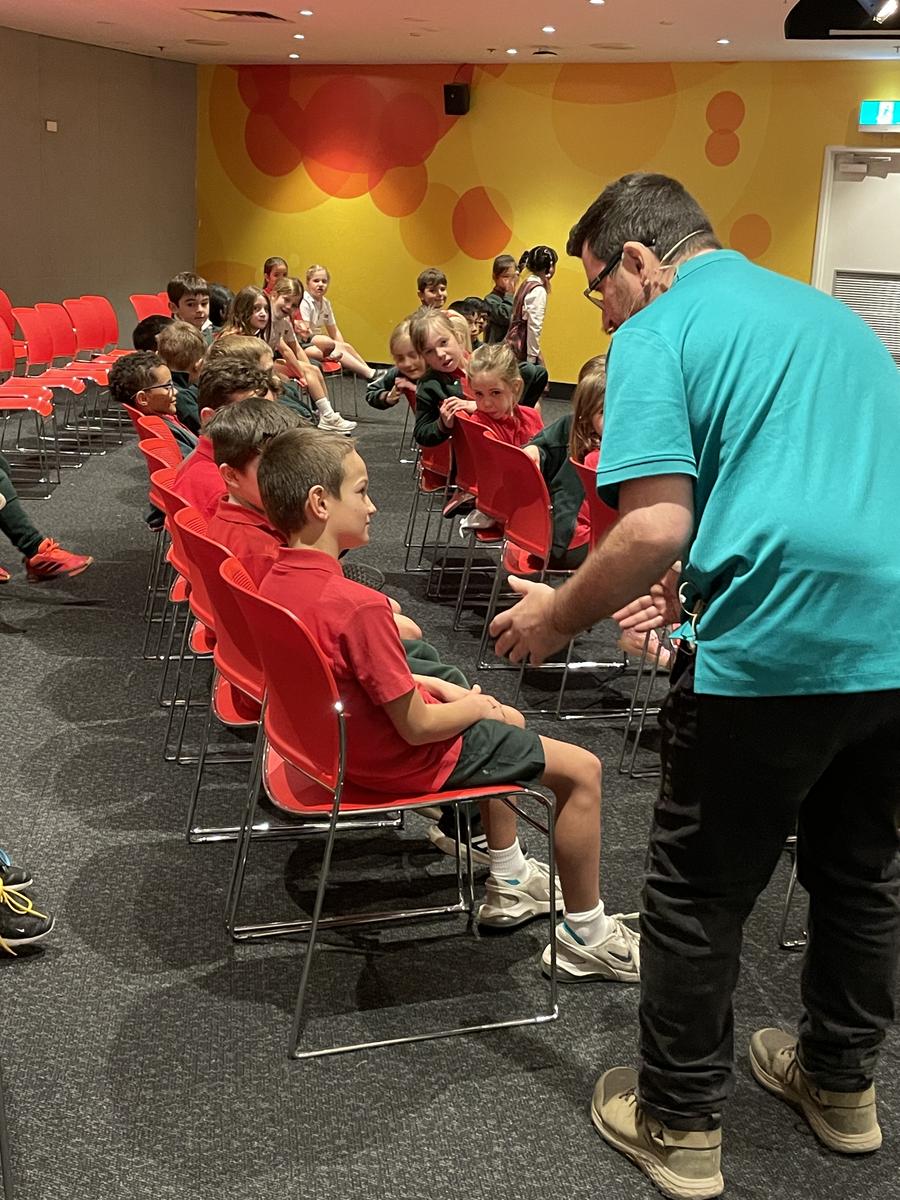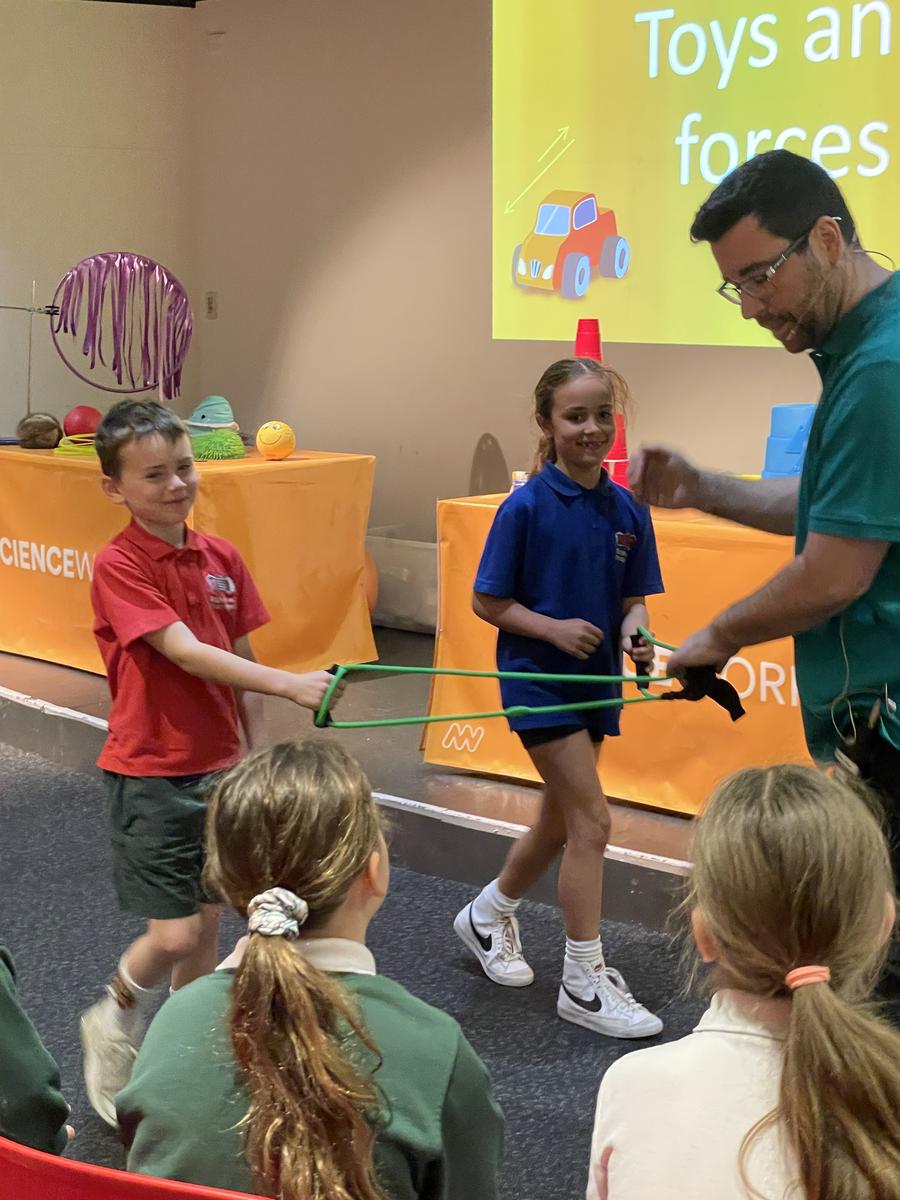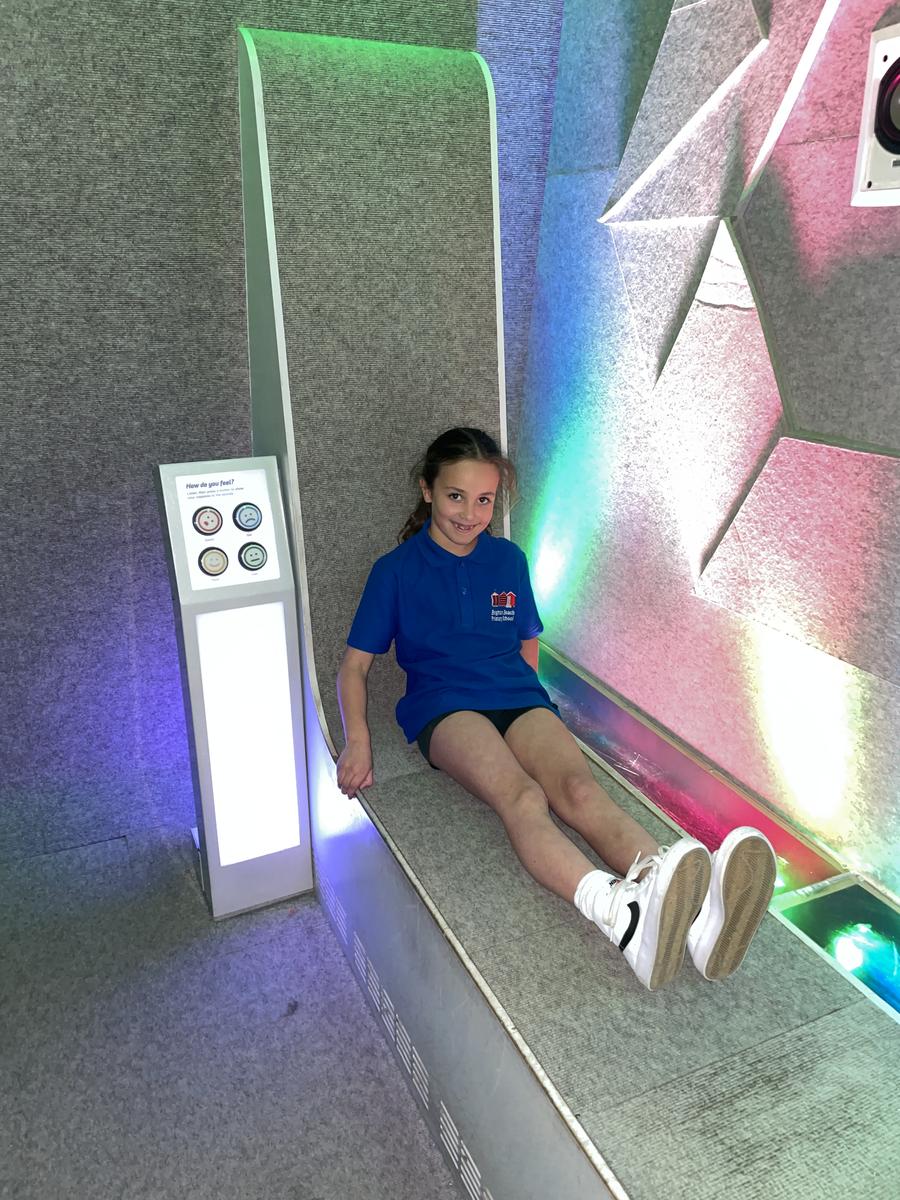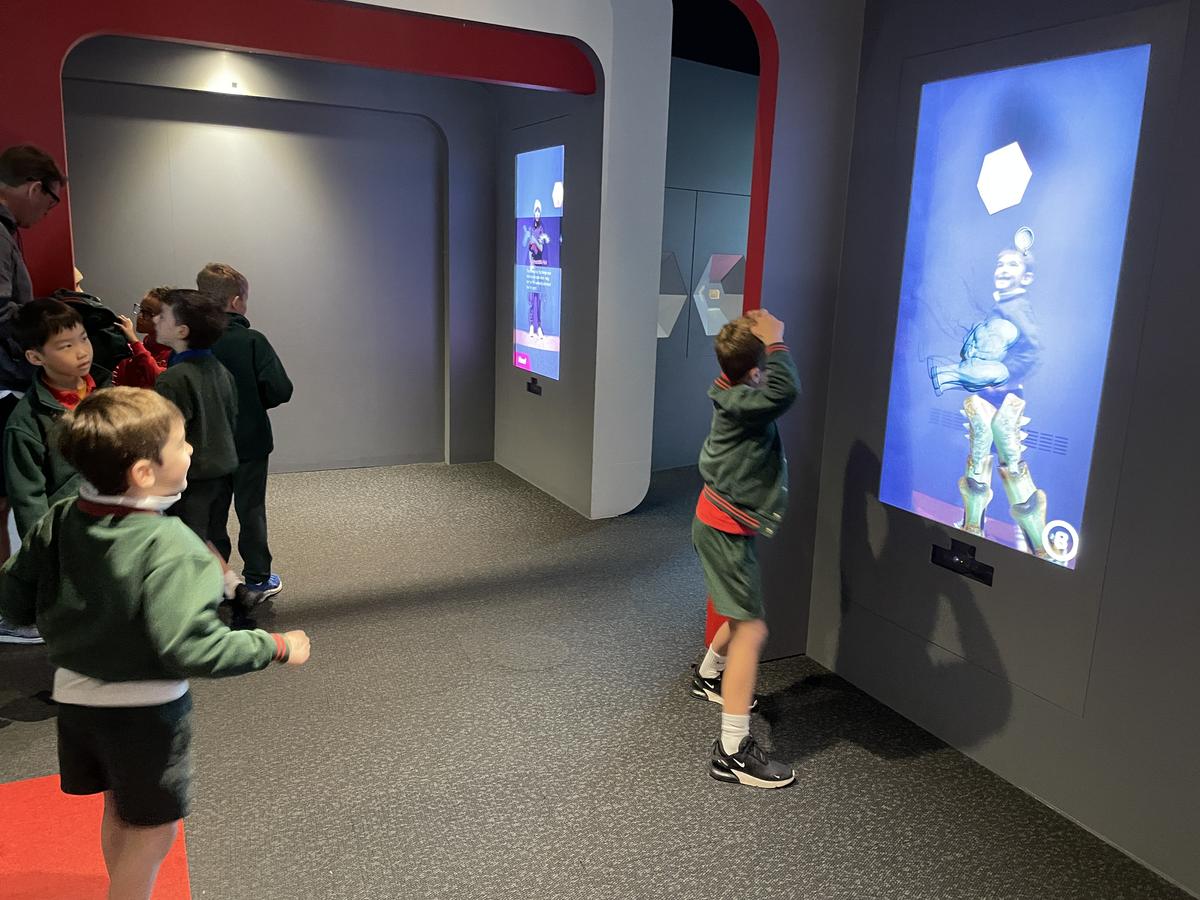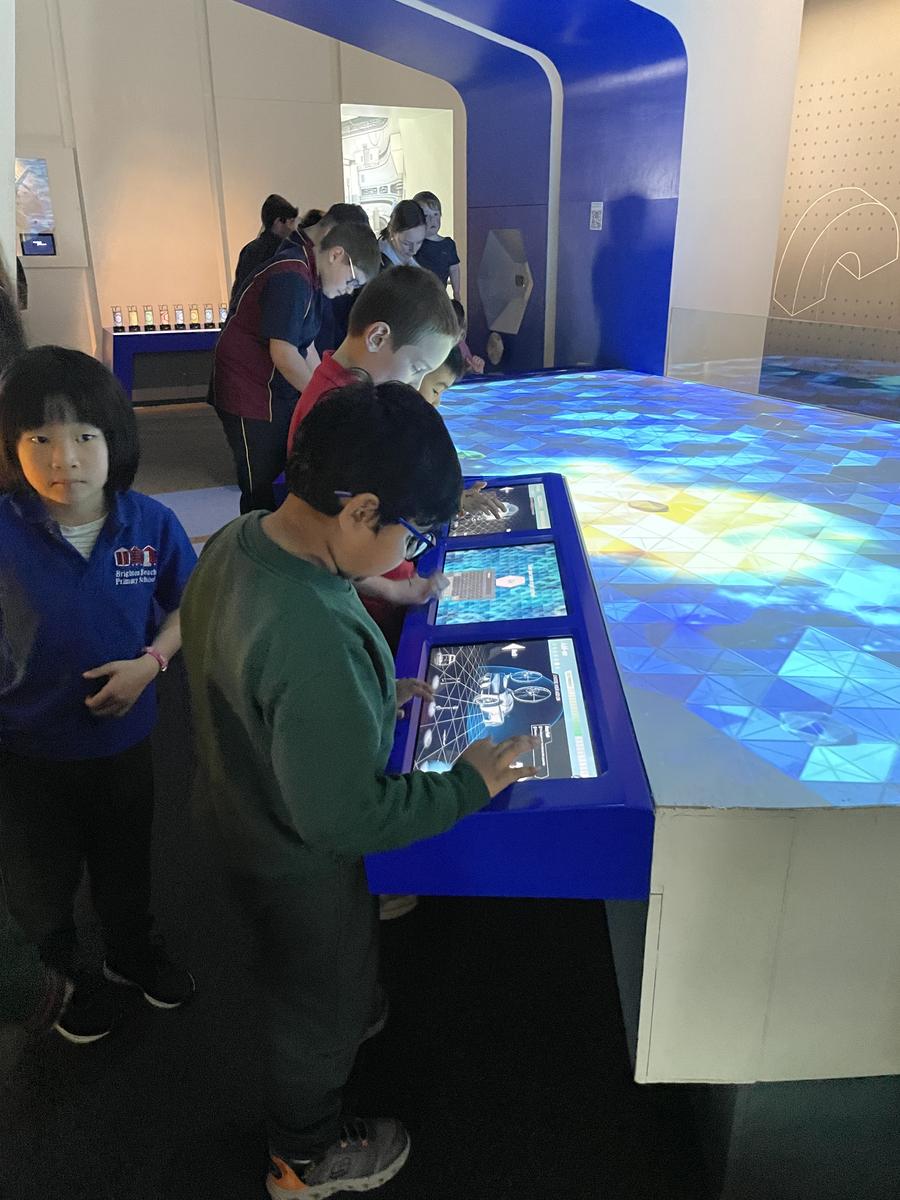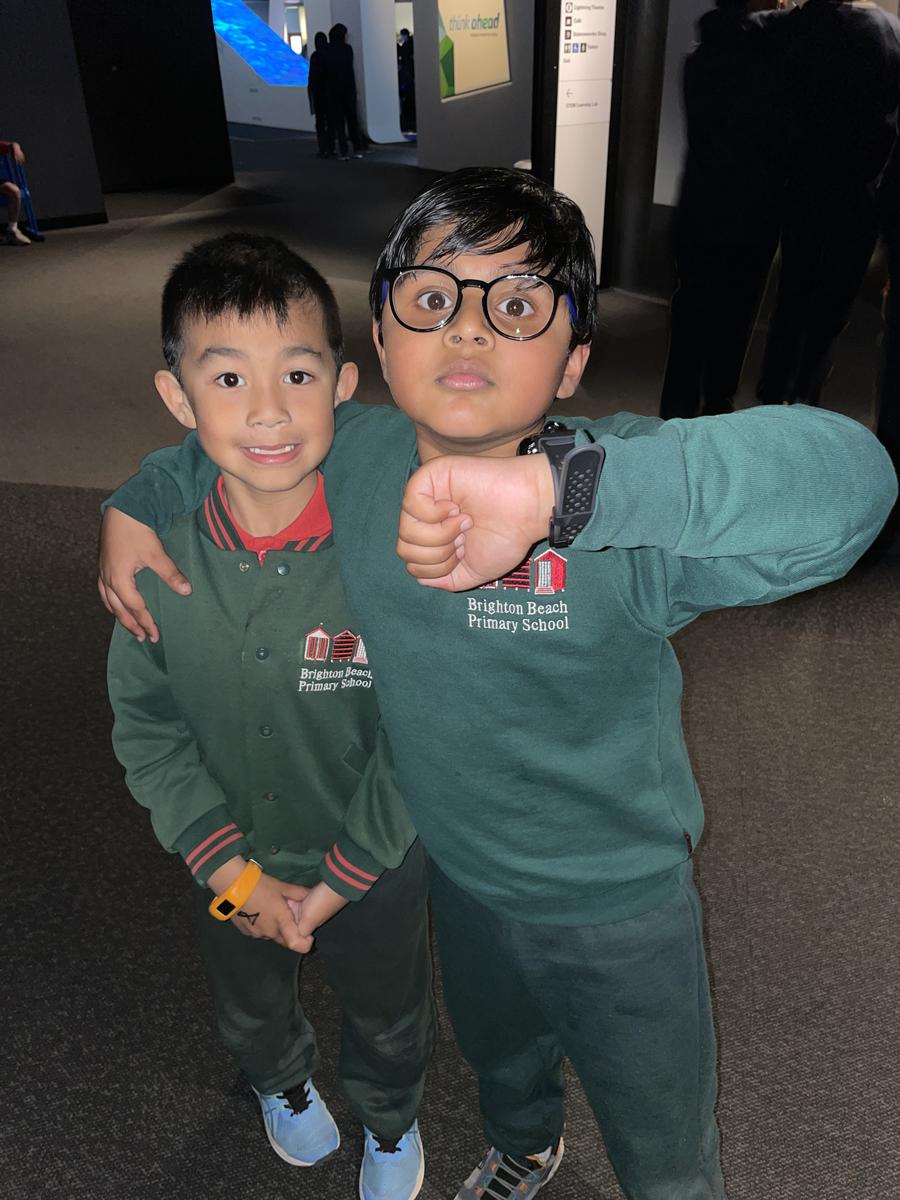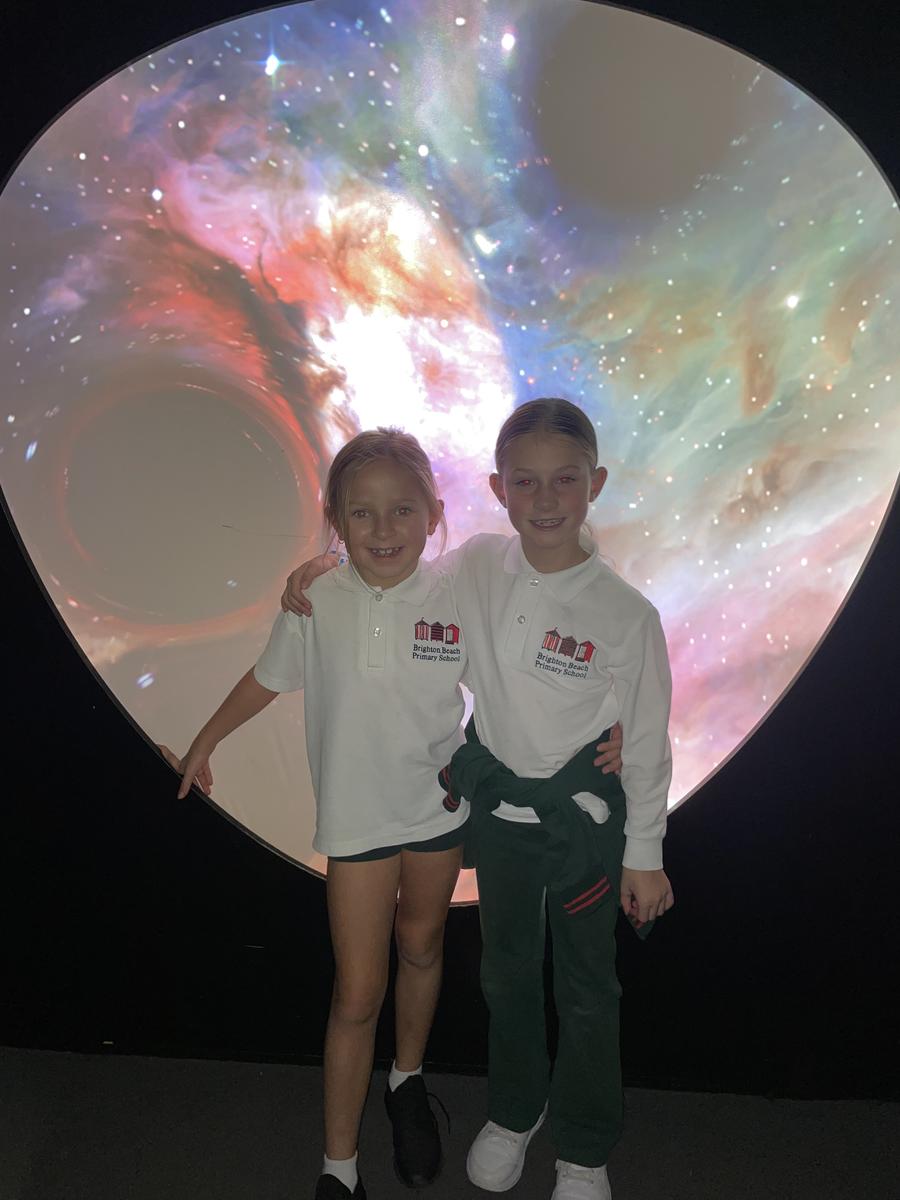BBPS Life: Spelling
Spelling

BBPS Life: Spelling
Spelling
Prep and grade 1
The junior school uses SMART spelling, a systematic, explicit phonics approach, as the basis of their spelling curriculum. Students participate in daily instruction that builds understanding of focus sound patterns and have opportunities to apply their growing knowledge through practice and review.
In Prep, students have been exploring common digraphs through our words of the week. Recently, we have learned about the ‘ar’ digraph in ‘car’, the ‘ng’ digraph in ‘king’ and the ‘ay’ digraph in ‘tray’. By analysing meaning and sound pattern, our students are transferring this understanding into their own writing when writing other words which have similar sounds. Eg. knowing how to spell ‘car’, then allows students to write ‘star’ and ‘far’.
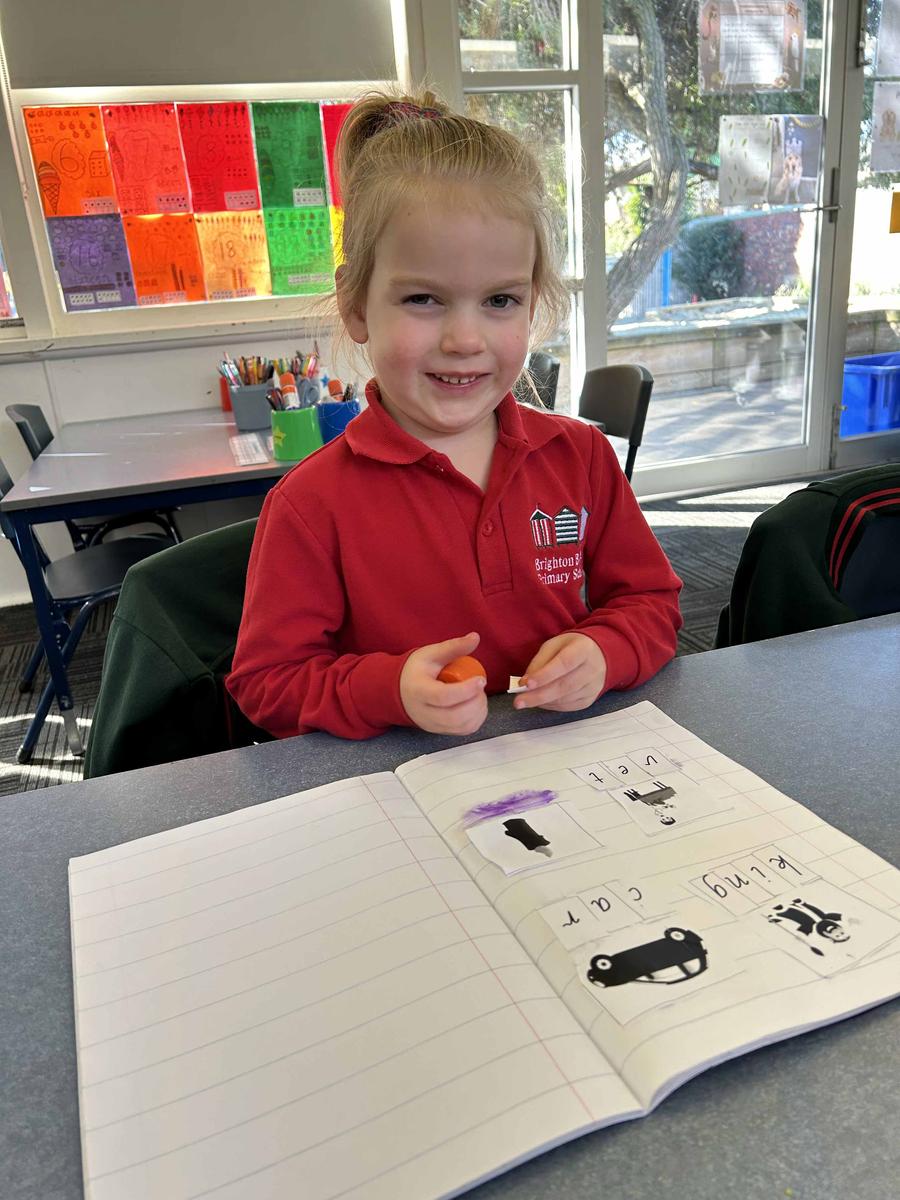
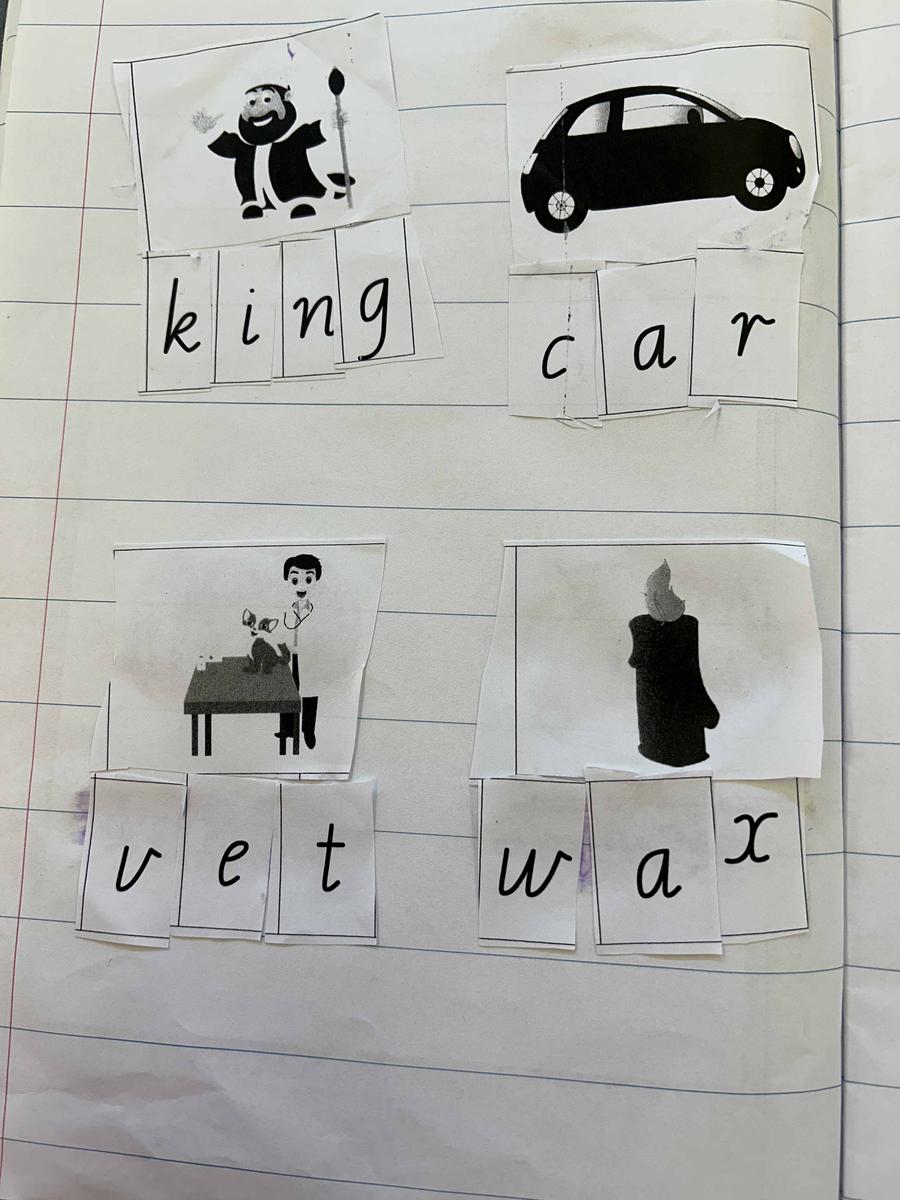


Phoebe "This week for spelling we cut out the letters and then we stuck them in under the pictures. I had to use my phoneme fist to work out the sounds and put the letters in the right place. The words were car, king, vet and wax."
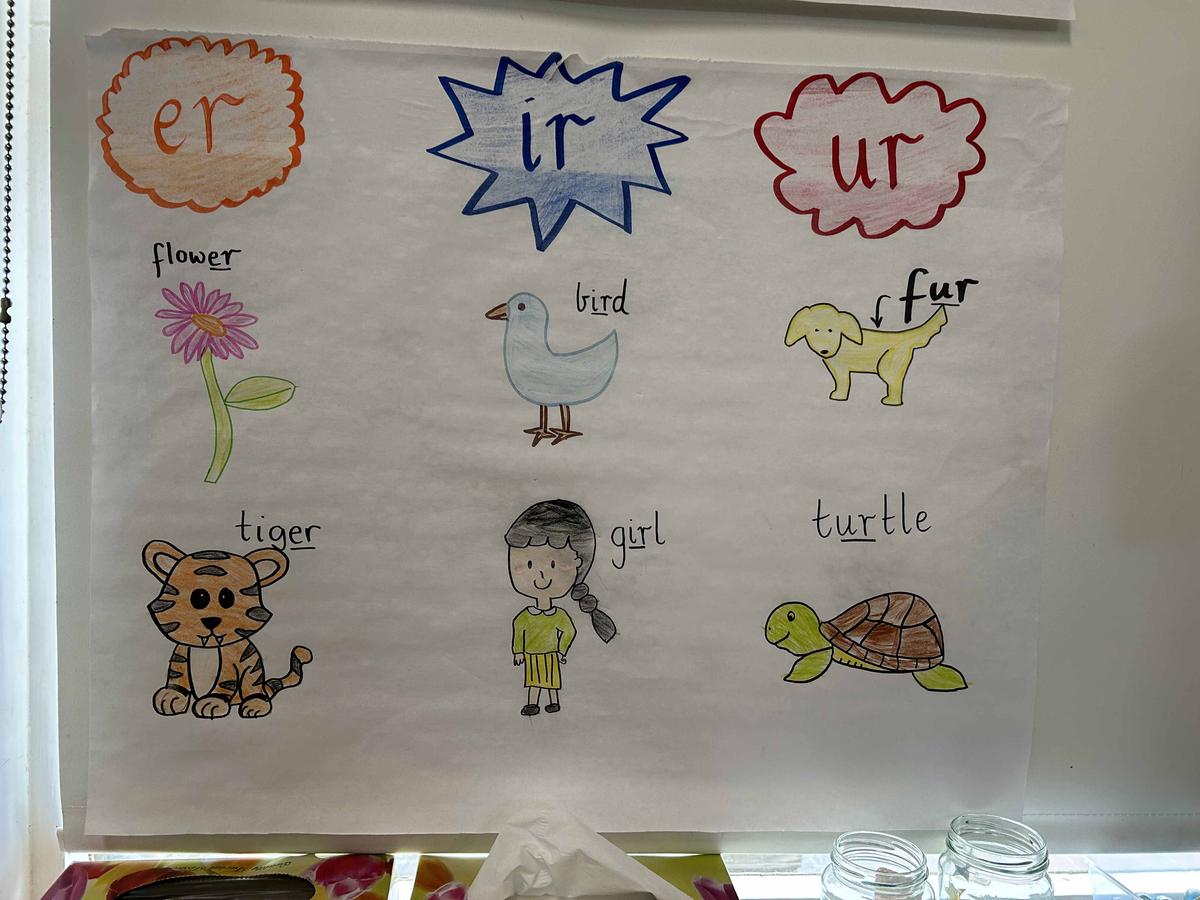
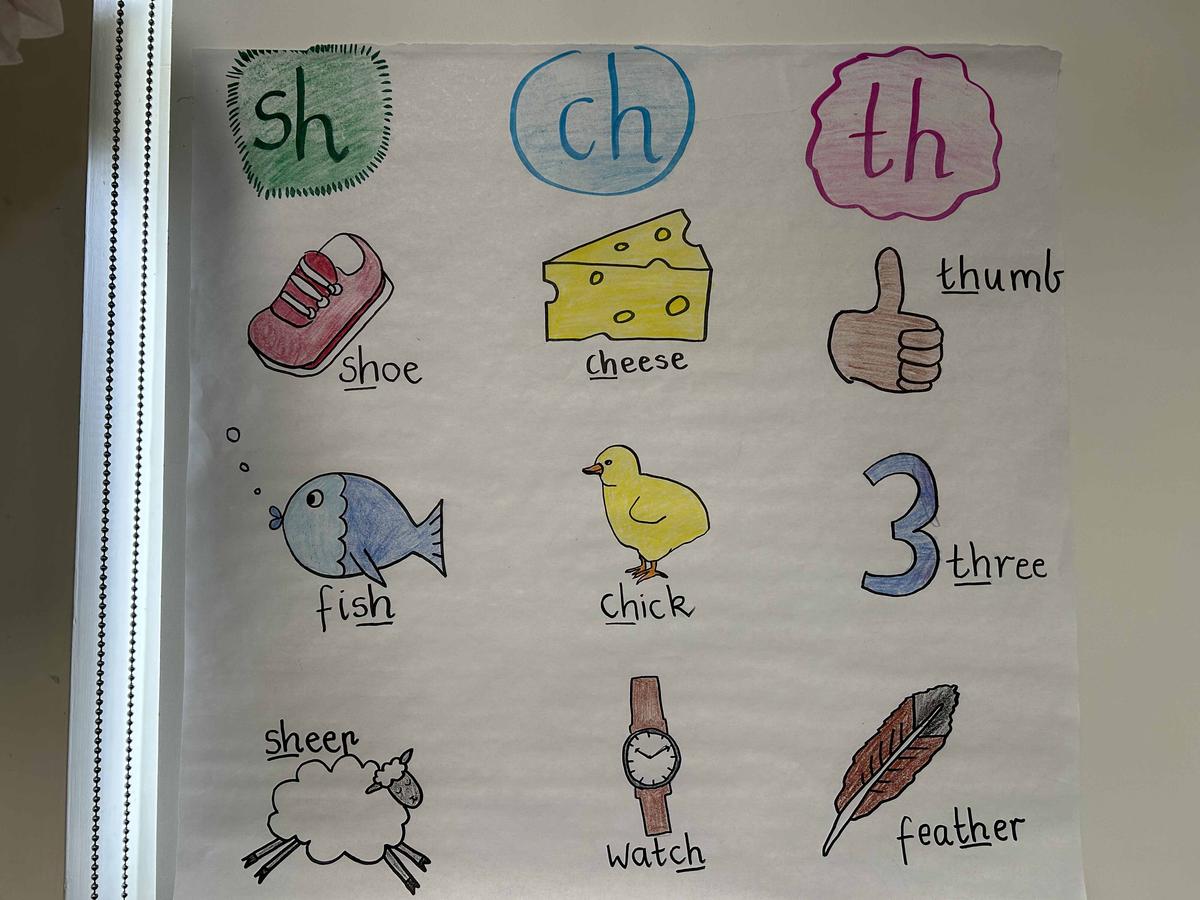


Grade 1 phonics: for the remainder of this term, we are revisiting familiar graphemes through more complex word lists.
ai – the sound “a” as in snail
ng – as in king
oy - as in toy
oi – the sound “oy” as in coin
Daily, students have the opportunity to recognise, manipulate and apply their knowledge of these graphemes, as a reader and writer.

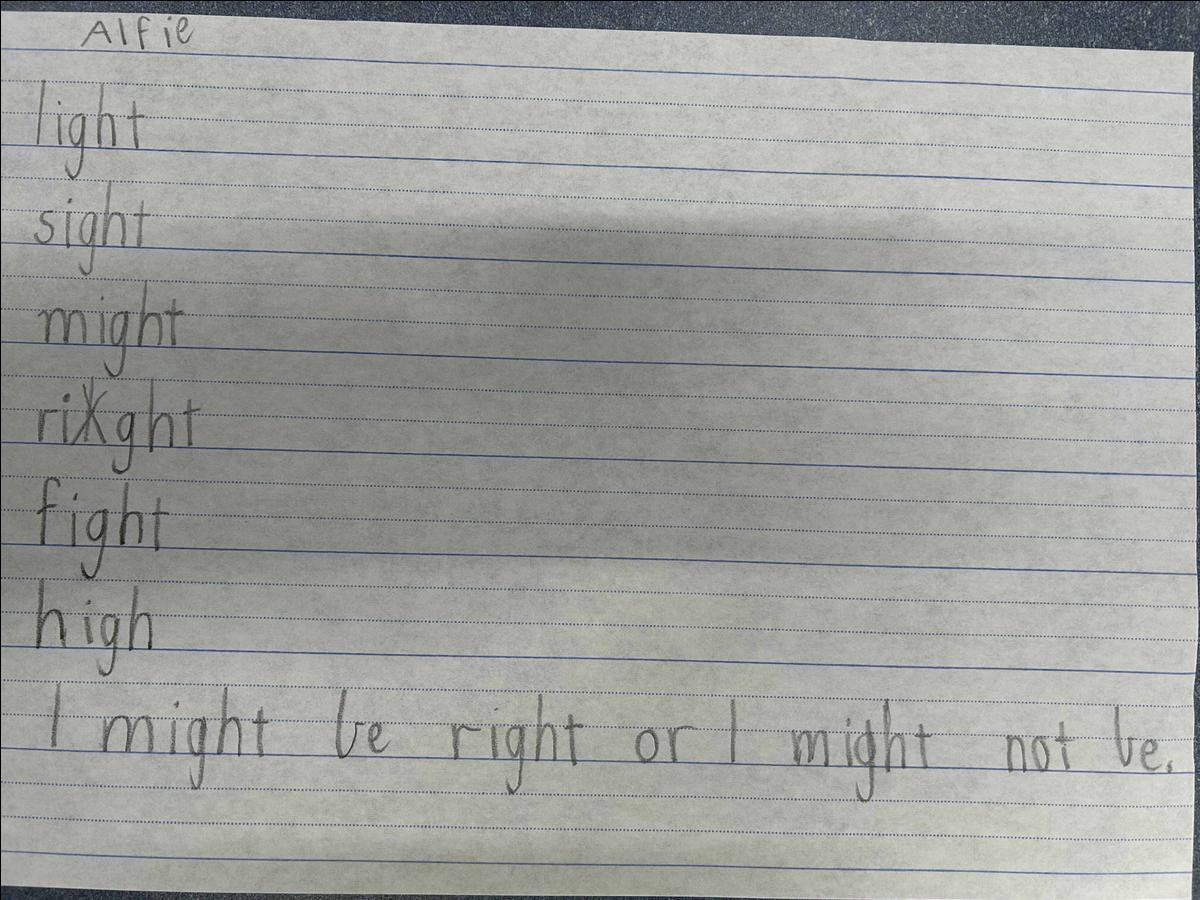
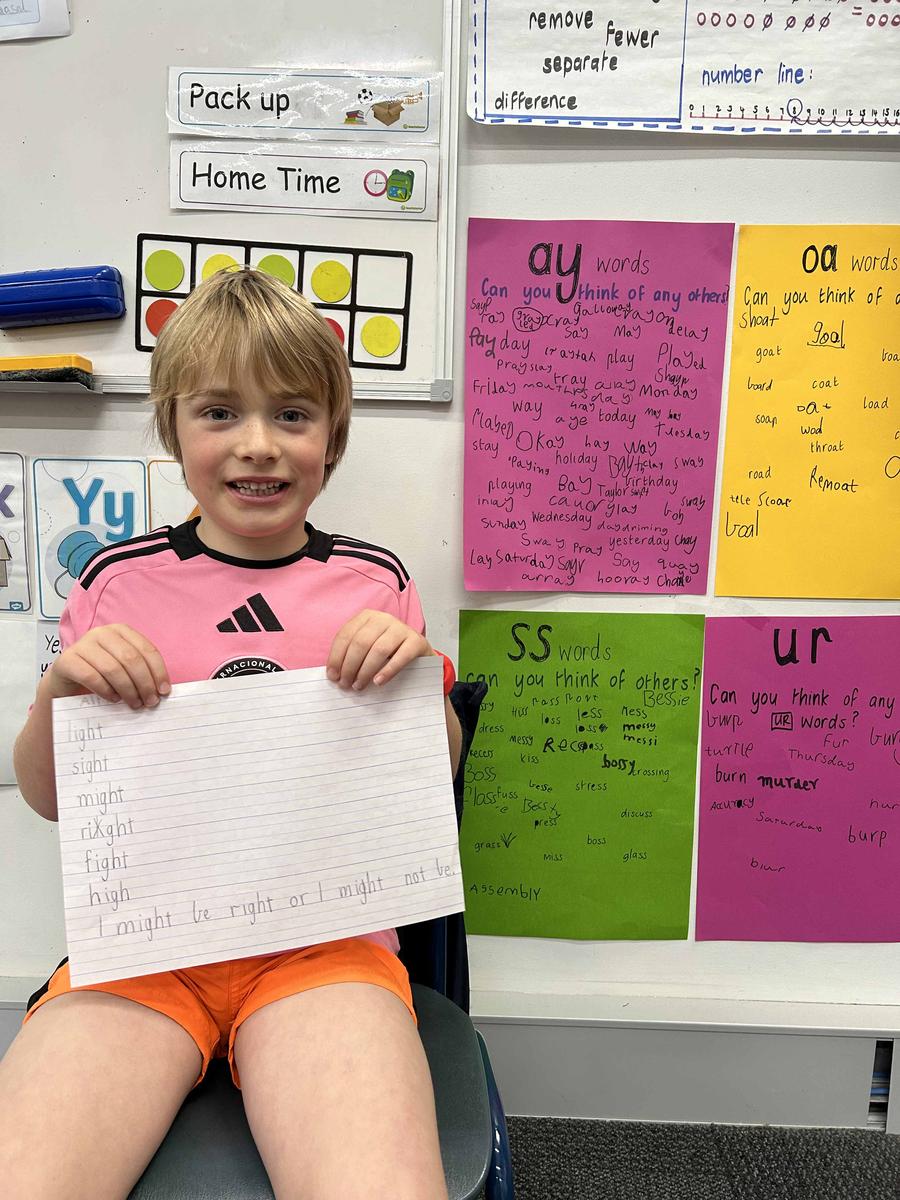



Alfie : "For home learning I wrote all the words in lower case and in upper case. I also had to draw 9 petals on a flower and write the words in the petals. Last week our trigraph was 'igh', which makes the i sounds. Some of the words with this trigraph are mighty and highest. In the classroom, once a week, we write the words on a whiteboard and also write a sentence."
Grade 1 vocabulary: Going beyond SMART spelling, we have been engaging in structured word inquiry by adding prefixes and suffixes to base words to change meaning. Structured Word Inquiry (SWI) allows students to begin to connect spelling to meaning, which translates into improved comprehension. Using the base word ‘play’ students discovered we could build a variety of different words including ‘replay’, ‘playful’, ‘played’, ‘playing’, ‘replayed’ etc.
Grade 2
Grade 2 phonics: A focus on segmenting and understanding the different sounds that different letter combinations can make. Once we hear the sounds in words, we use our phonics knowledge to use the appropriate grapheme(s) to represent the sounds we hear.
This month, students are exploring how to form plurals by adding 'es' to words, such as turning “box” into “boxes.” They are also mastering the trigraph 'igh,' which makes the 'I' sound in words like “night” and “light.” Additionally, our class is discovering how the letter 'o' can make the 'u' sound in words like “come” and “some.”
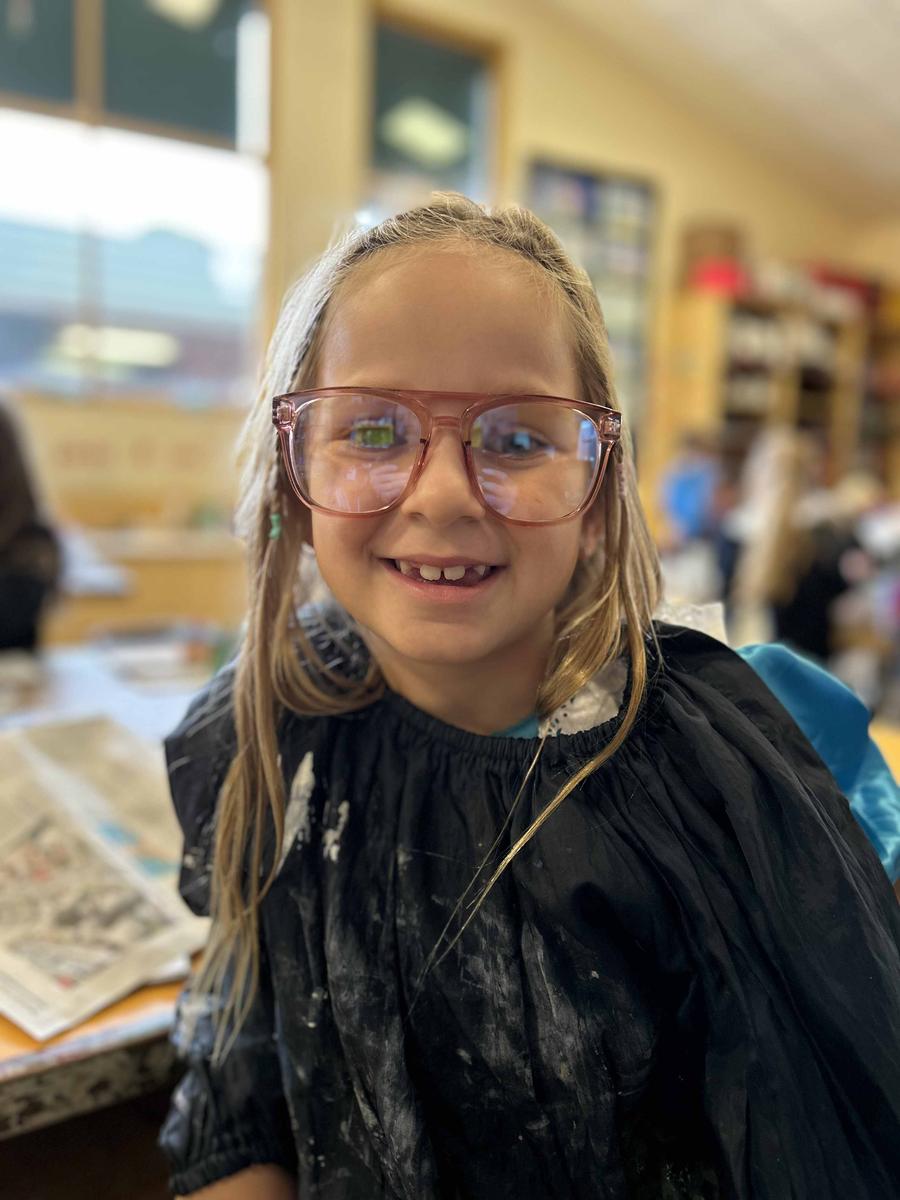

Mackenzie "When we are setting up our home learning, we also write our spelling words in our spelling book. Every day we do something for spelling. Sometimes we have a bubble on the board with two letters that are a digraph and we have to make words in that sound family. Some weeks we do a spelling test as a reflection so we can see how we are going in our spelling."
In P-2, a focus on high frequency words (also often referred to as sight words or irregular words) is a further component of our spelling curriculum - The ultimate goal is for these words to be automatically recognised through systematic and explicit teaching of speech-sound mapping. Stay tuned for some shifts in our home learning to reflect a narrowed focus on high frequency words for semester 2 in grade 2, in preparation for transition to grade 3.
Grades 3 and 4
As we shift from “learning to read” to “reading to learn” in 3rd grade and beyond we need a targeted approach to spelling so that students can decipher unknown words.
At BBPS, we use Spelling Mastery as the basis of our spelling curriculum - students engage in a highly structured teaching method, four times weekly based on their point of need. During these sessions, students learn about words through the interweaving approaches of phonemic, morphemic and whole word understanding. The phonemic approach allows spellers to make connections between spoken sounds and written letters. Whilst the morphemic approach exposes spellers to prefixes, base words and suffixes. The whole word approach looks at the root word and the meaning of all aspects of the word and how they are spelt. The cumulative and repetitive instruction helps students to master each concept.

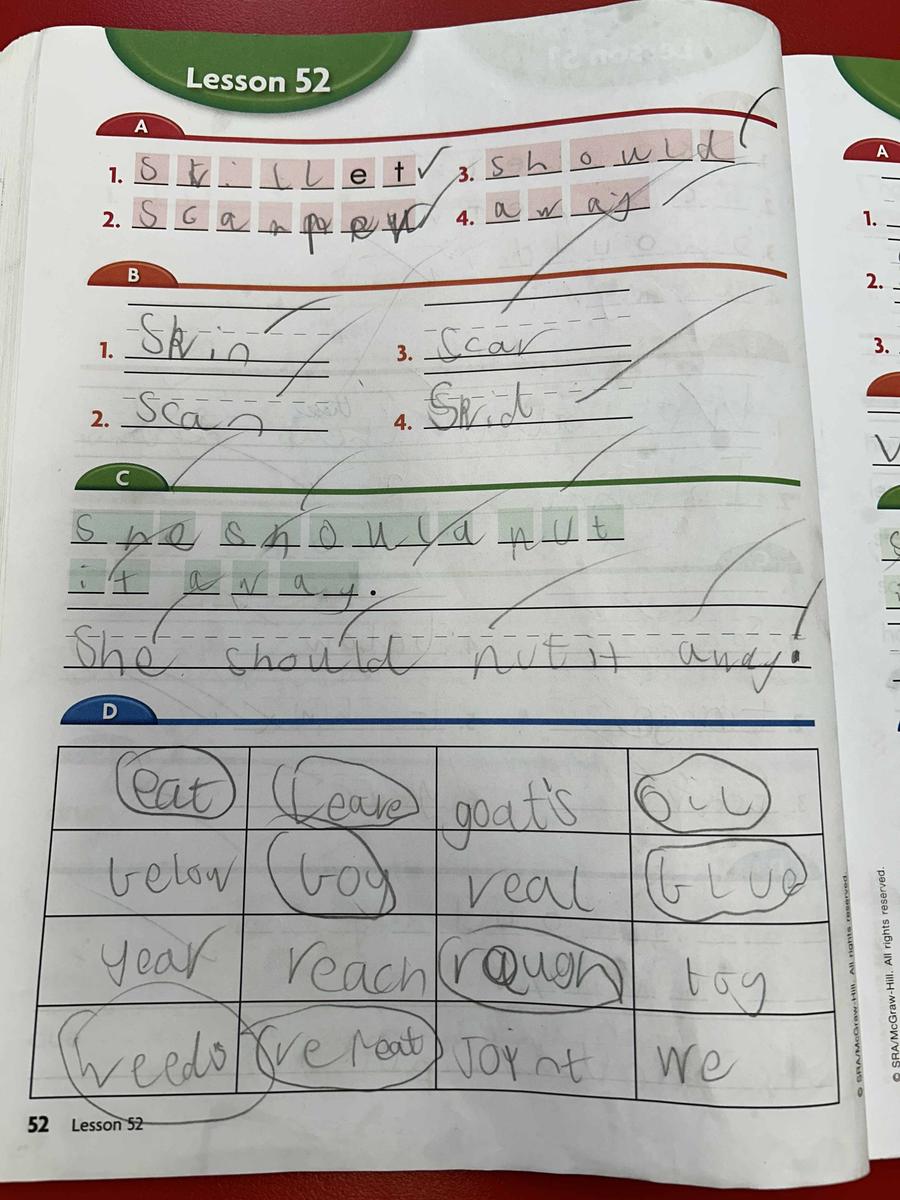




Lachlan (3C) "We use a program called Spelling Mastery. We each get a book and the teacher gets a bigger version of the book. The teacher reads out what each activity is. Sometimes the teacher reads out words and we have to say how to spell them. Sometimes he picks a student to spell a word. Sometimes there is a crossword puzzle or a bingo card. I like the bingo games but the last time I played it i didn't get four in a row."
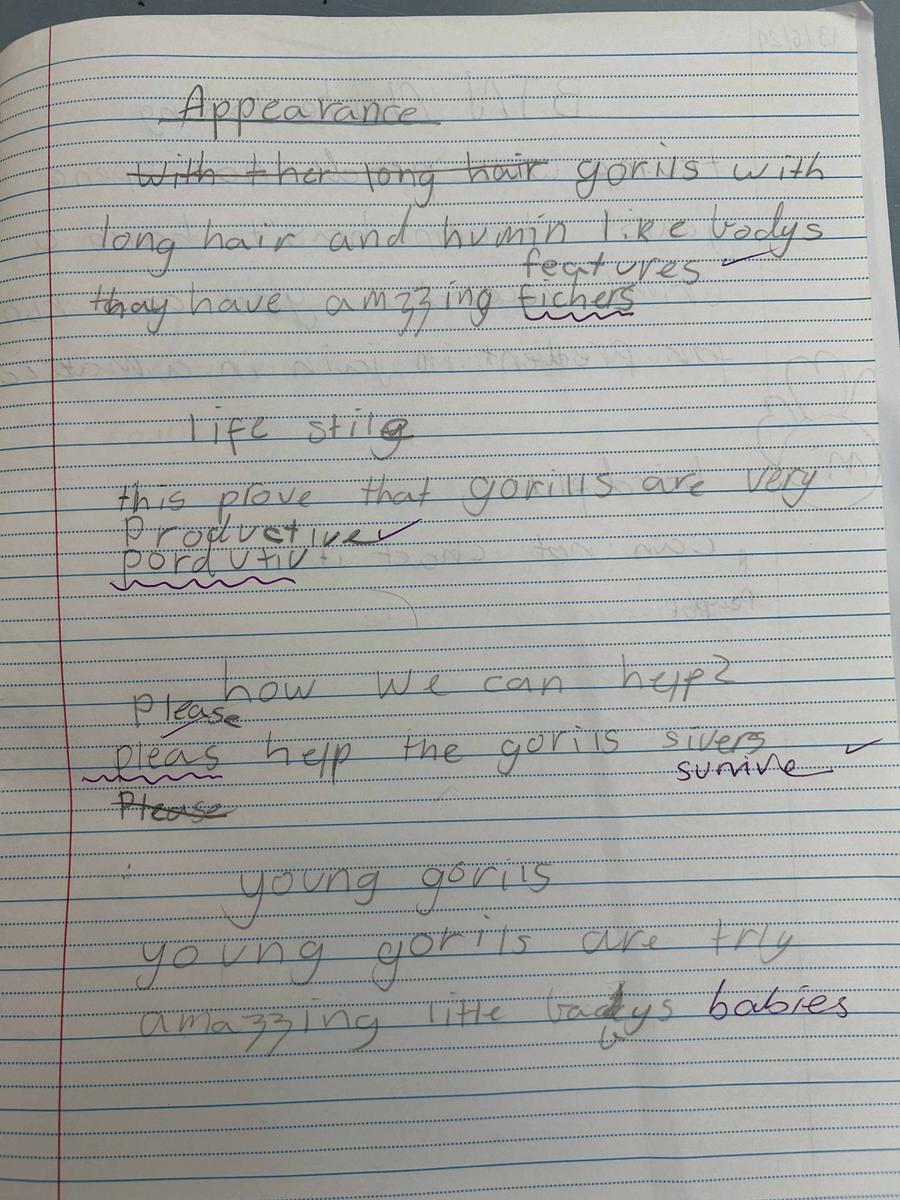
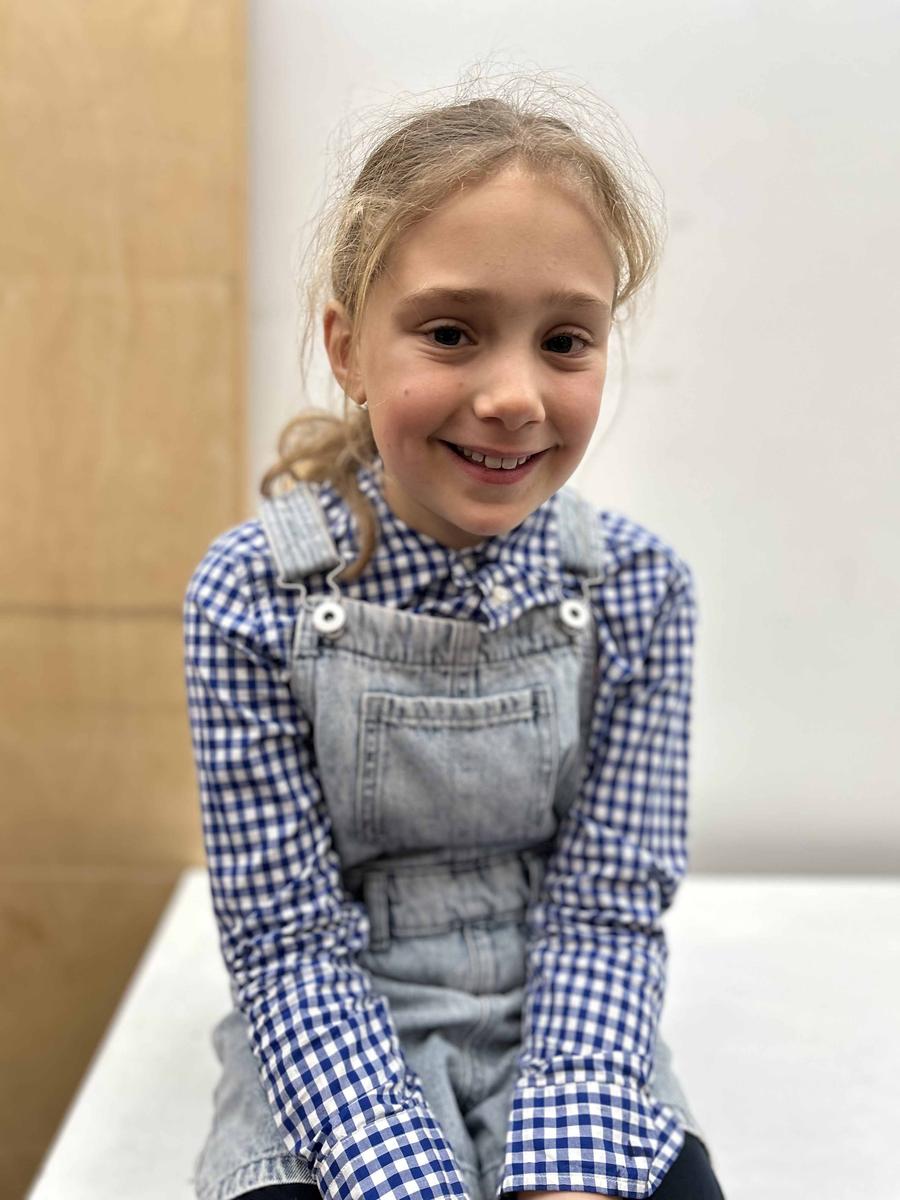


Penelope (4B) "When I am writing and I am not sure how to spell a word I think of the sounds and try to spell the word. After I have finished the paragraph I go back and if there is a word I am not sure of I will underline it. And then I will either check with Ms Bernau or look it up in a dictionary. "
Vocabulary in the Hub: During explicit vocabulary lessons we choose a class text that is rich in vocabulary and focus on one tier 2 word in each lesson. Tier 2 words are words that are used in a variety of topic specific contexts and more likely to appear in text than in everyday conversation (e.g., 'ferocious', 'crumble'). With each word that we focus on we look at its meaning, the morphographs within the word, along with synonyms and antonyms.
Last week The Hub unpacked the word blacksmith from our class book My Place by Nadia Wheatley and Donna Rawlings and its connection to surnames in history. We then looked at the root word of smith meaning one who works with metal, which piqued our interest and began our research into surnames and how they came about. We discussed surnames along the lines of Butcher, Baker and Porter. You may remember your child coming home and asking about the meaning and history of their surname!
Grades 5 and 6
Spelling is embedded into our reading and writing practice in the senior school. Some ways in which we do this is through:
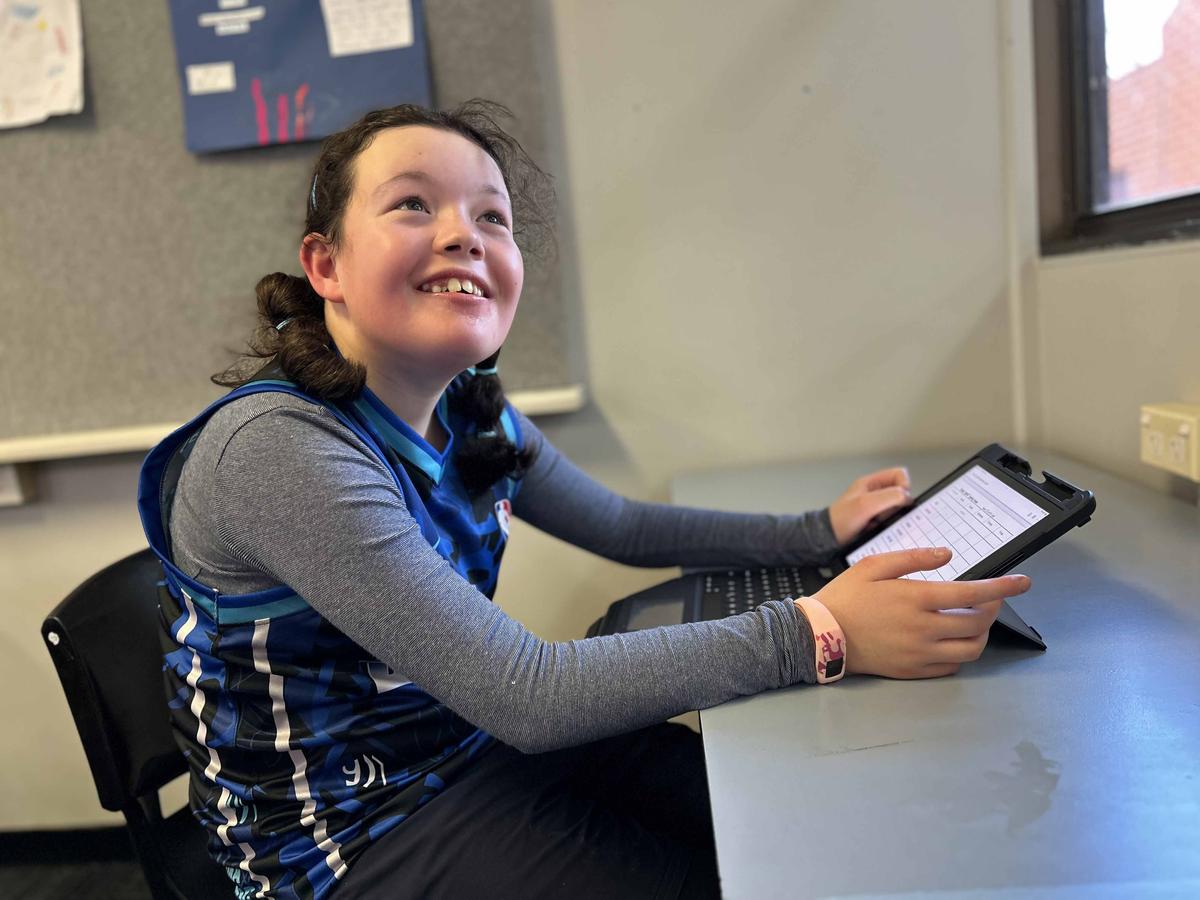

Lucy W "I do my spelling on my iPad. Every week I get a new list of words. I learn them at home with my Mum. Every Thursday we do a spelling test. I like spelling because I find it easy but sometimes it can be challenging."
Other great learning around the school
Grade 3 and 4 visit from Auntie Katrina Amon
The Grade 3/4 Hub was honoured to welcome Auntie Katrina, who spoke to them about indigenous perspectives on Australian History.
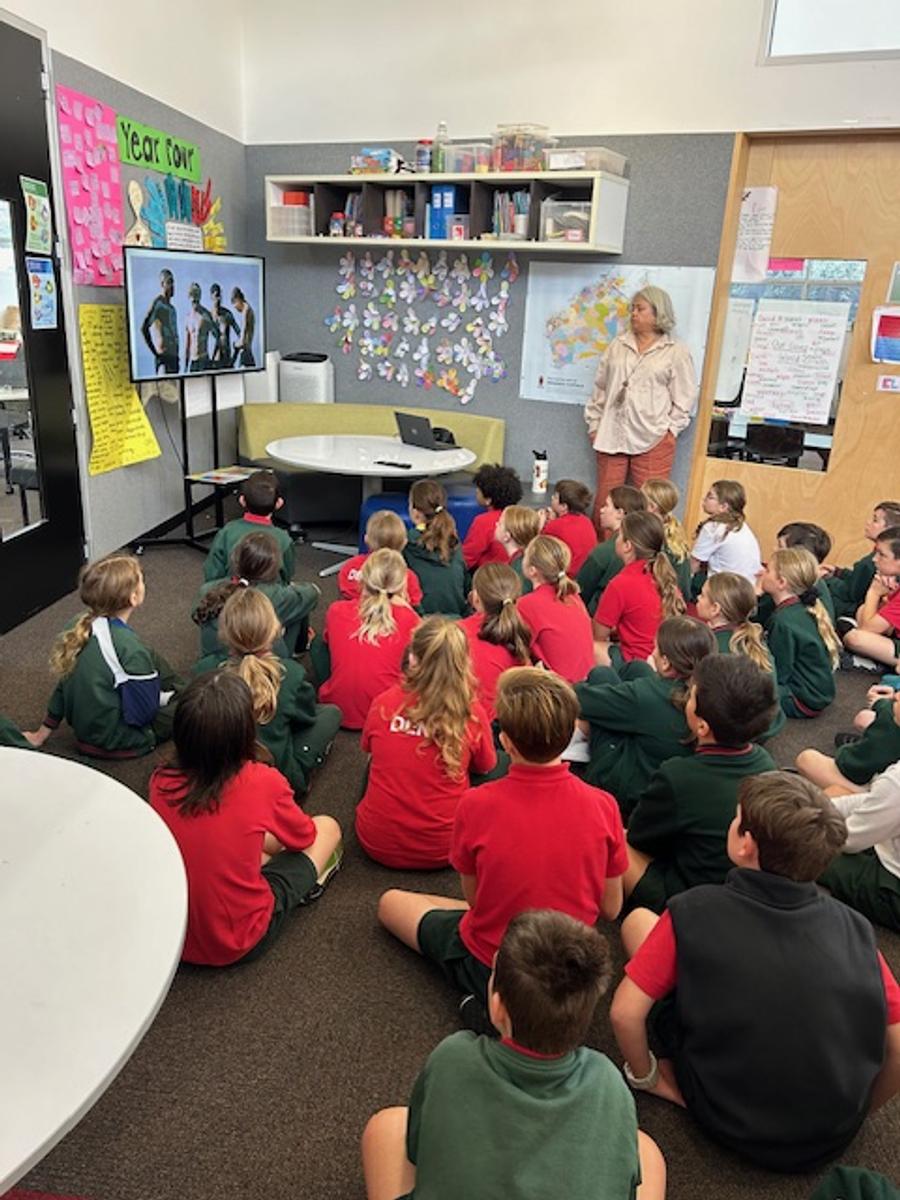
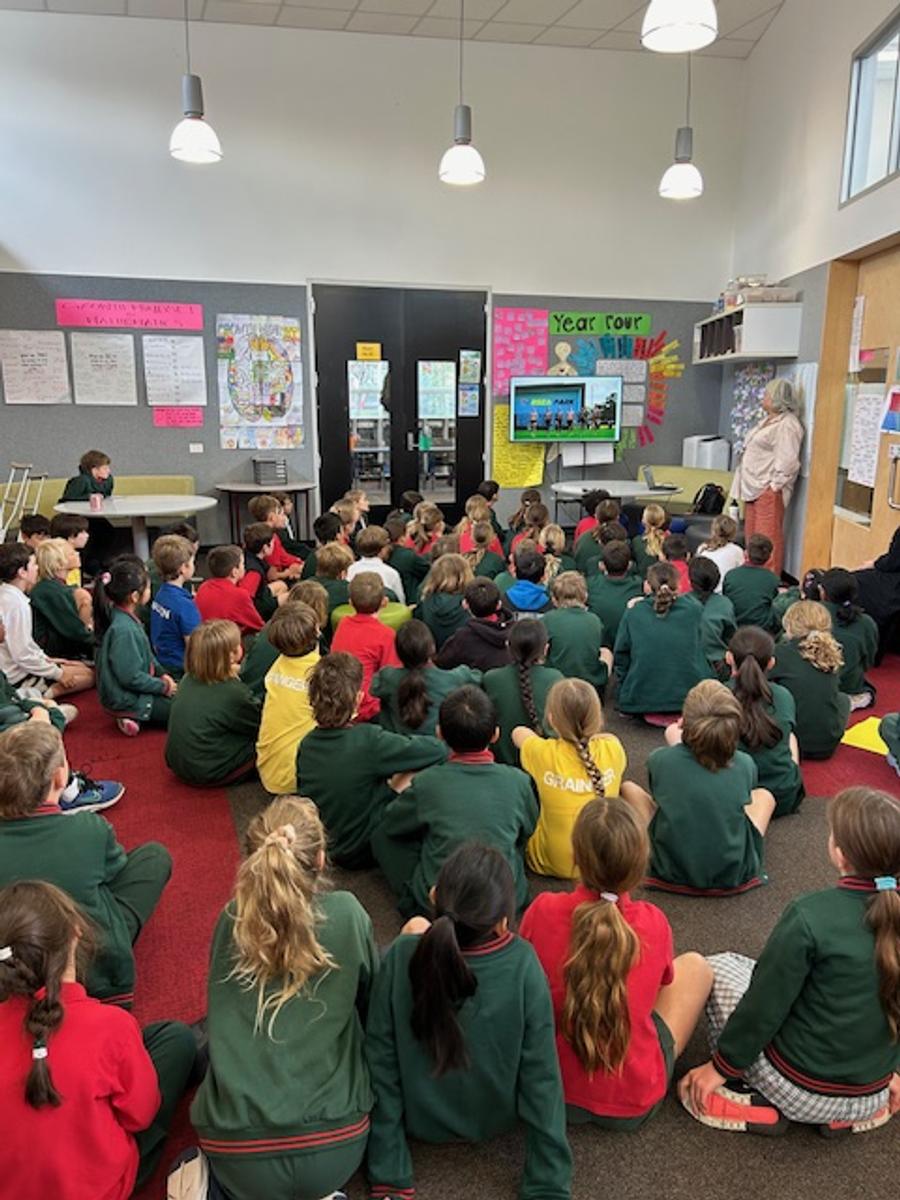
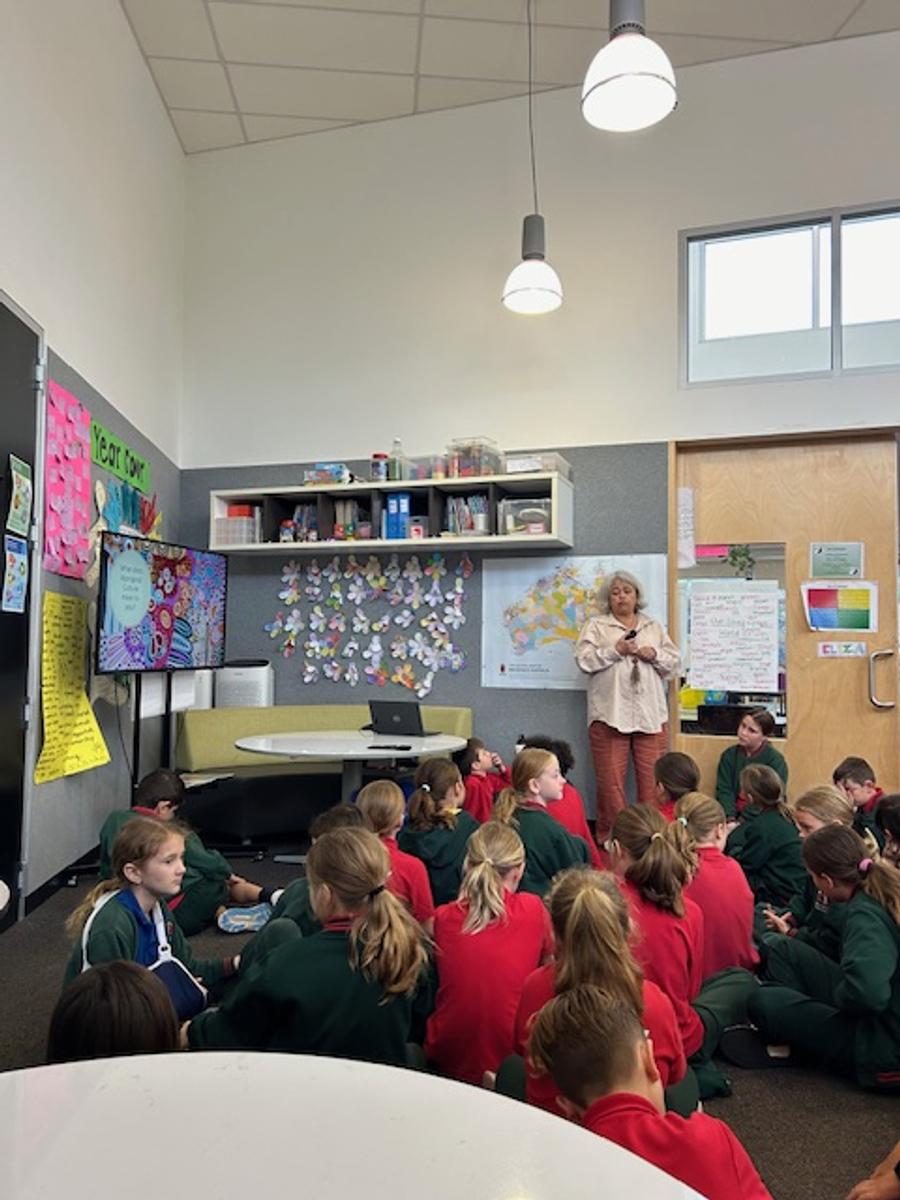



Grade 5 and 6 "Smoothie" incursion
The grade 5/6 inquiry unit on business included the creation of a brand, a business plan and market research. Participants designed their own smoothies in teams, and sampled the results. The learnings from this incursion will assist students as they prepare for our popular "Market Day" event later this term.
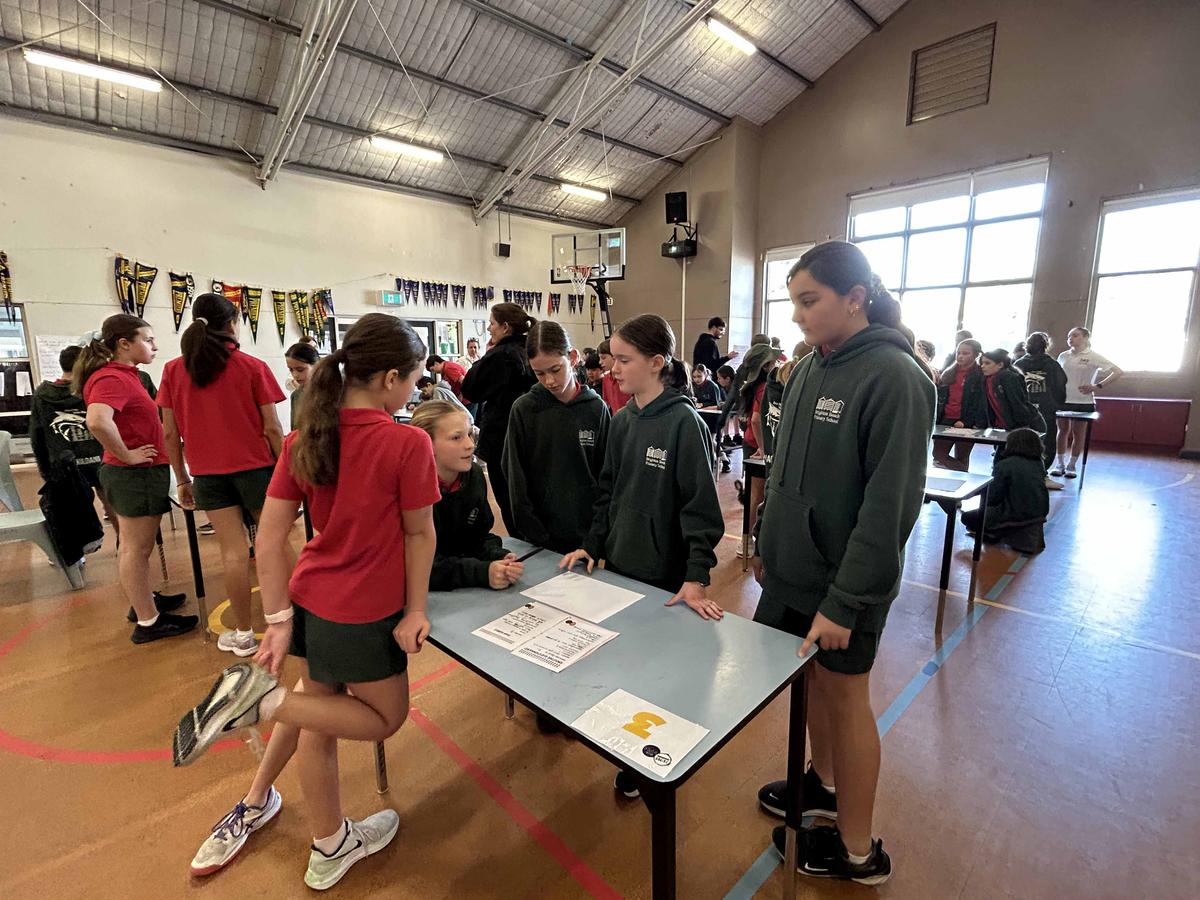
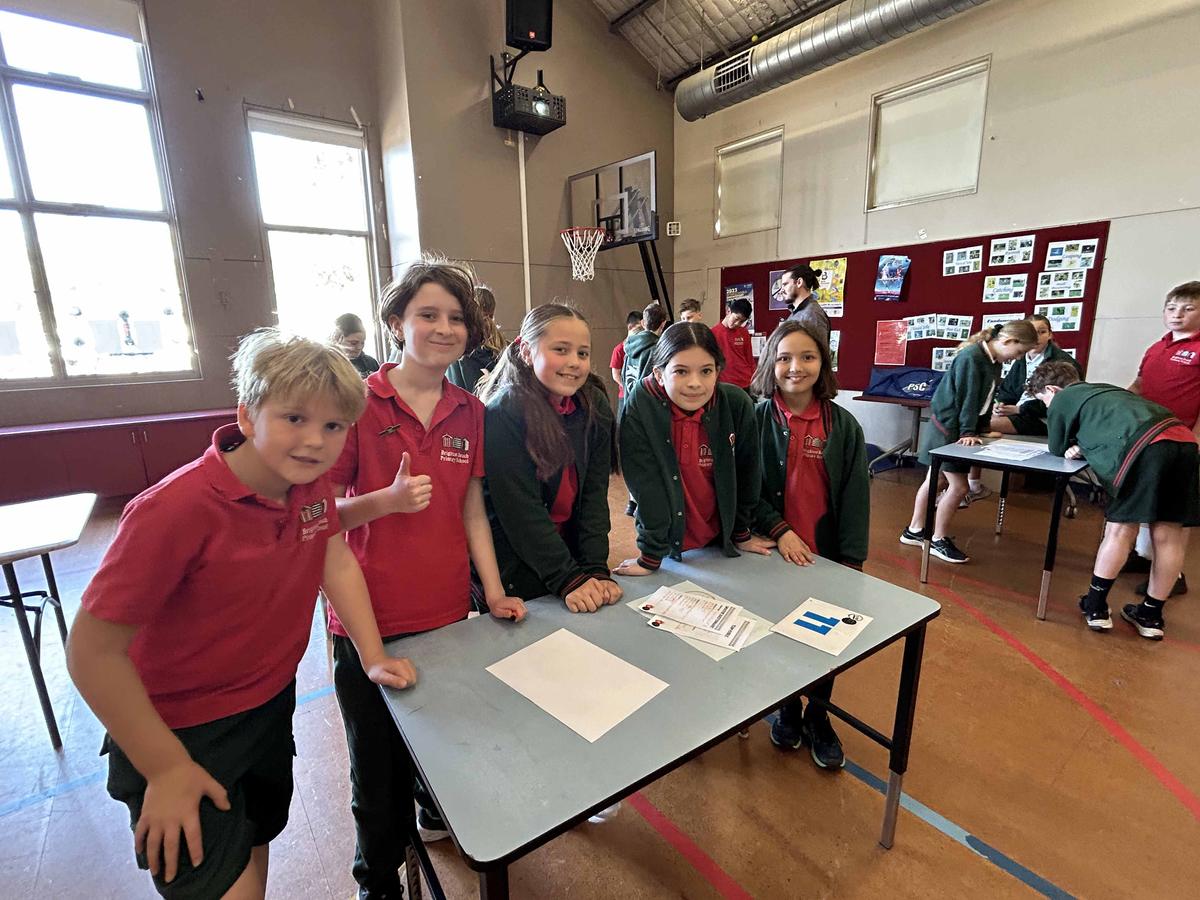
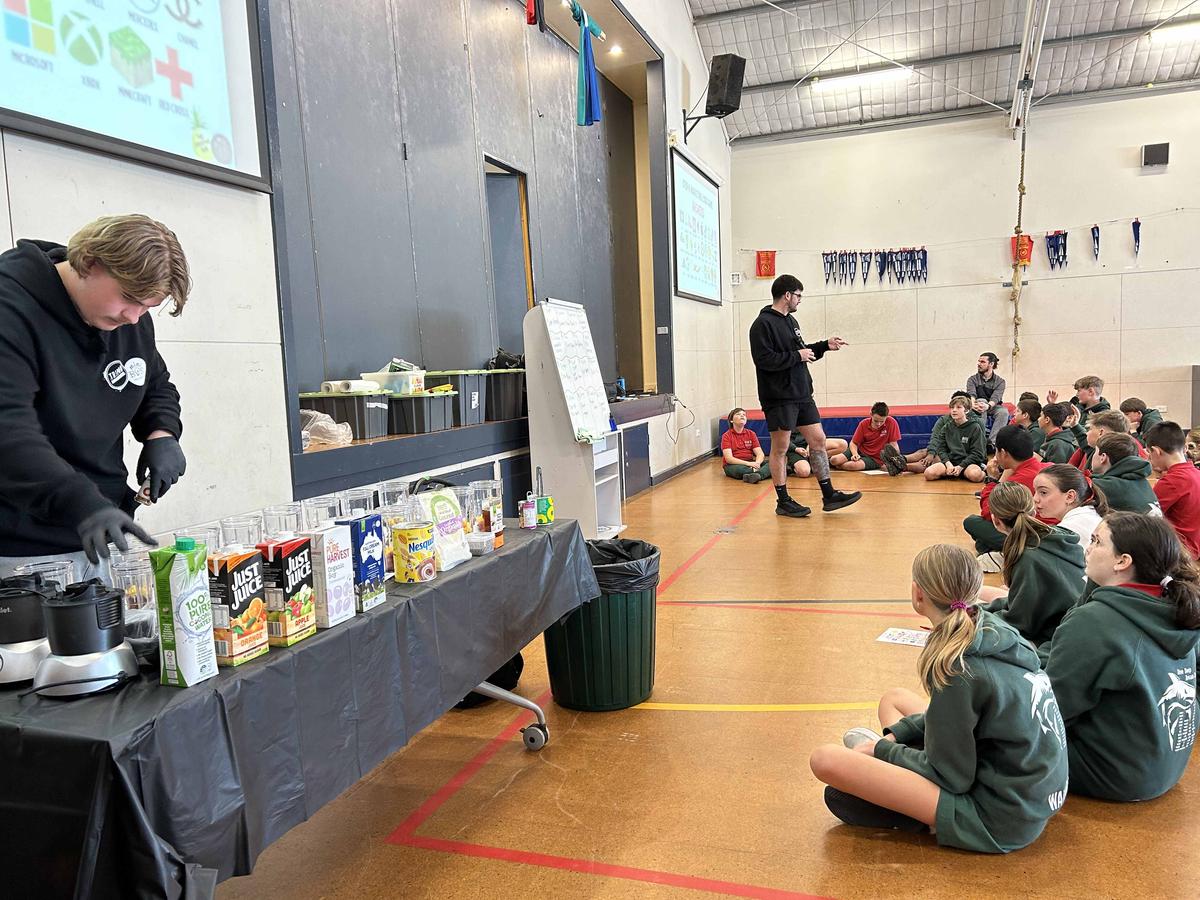
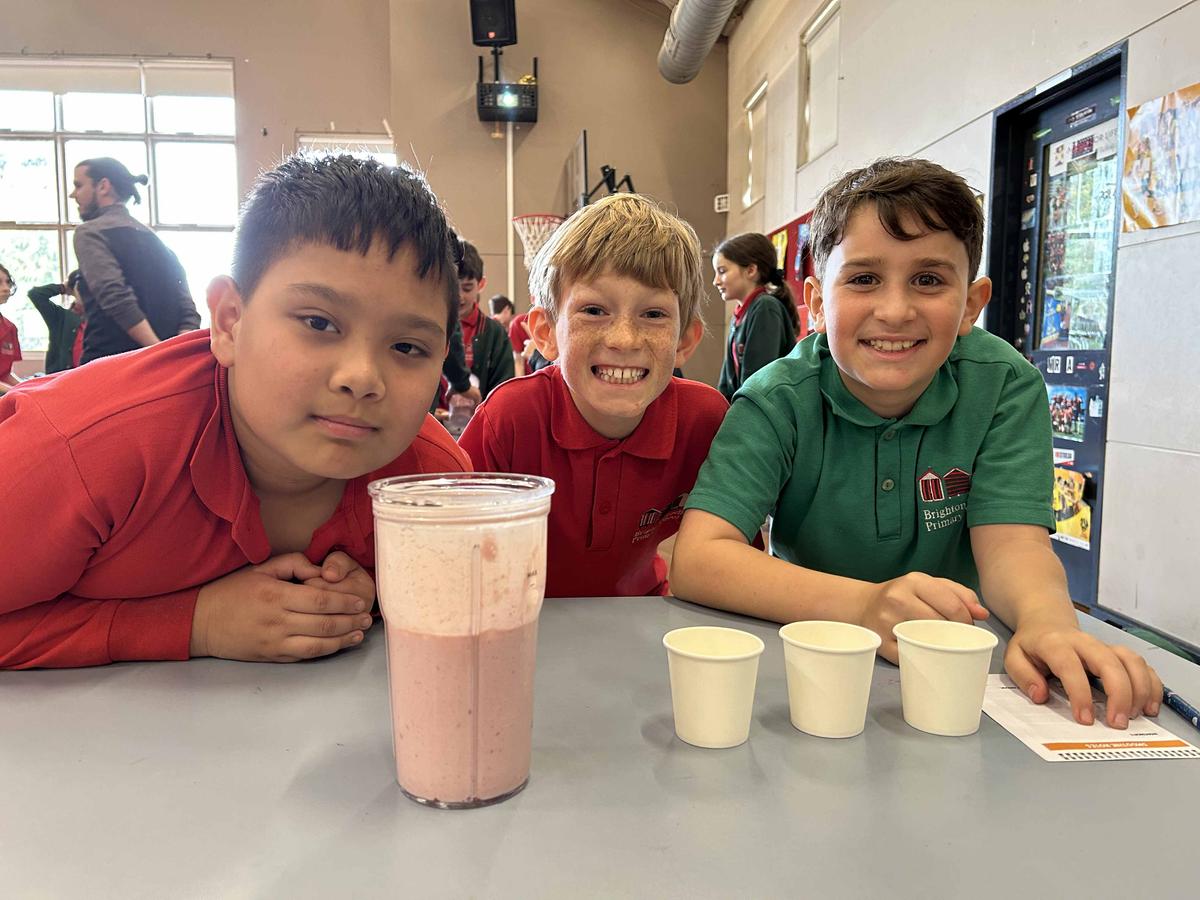
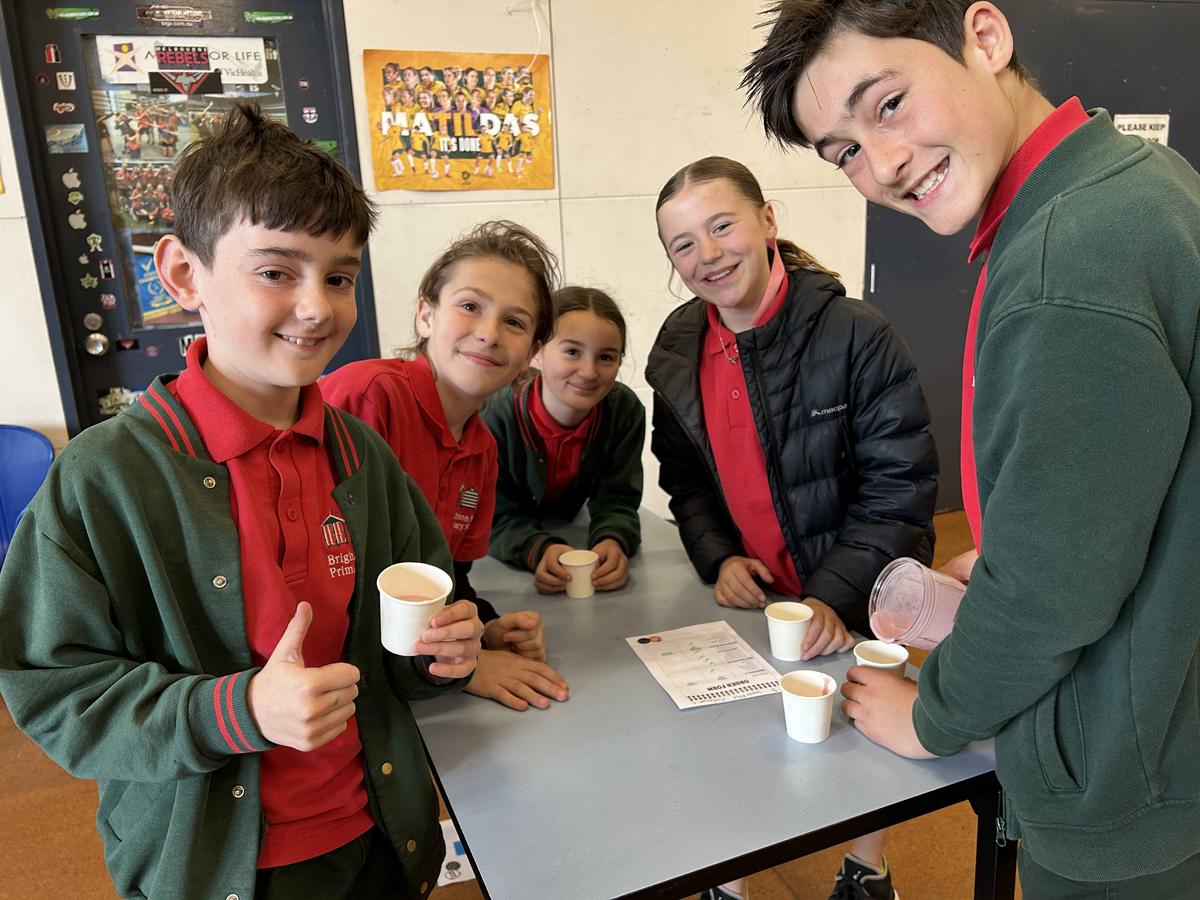
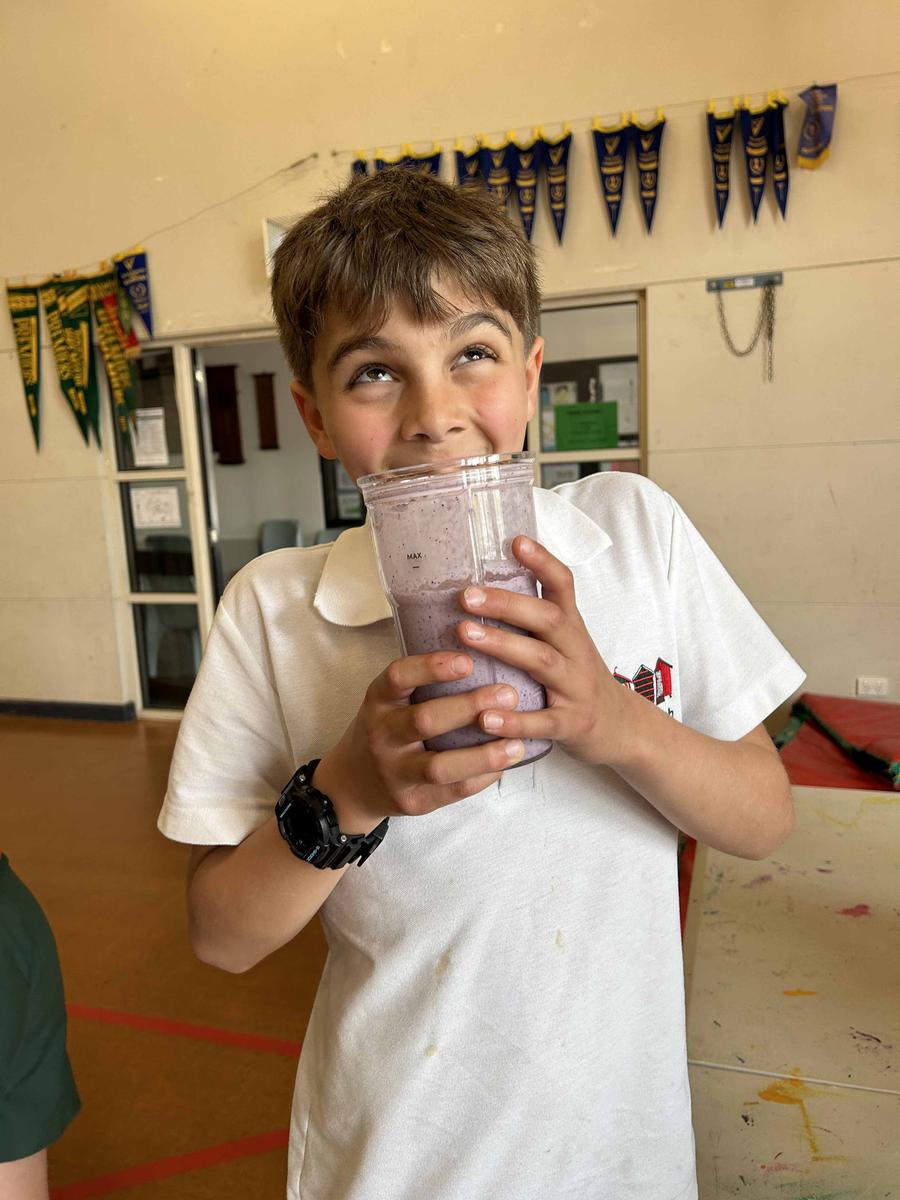
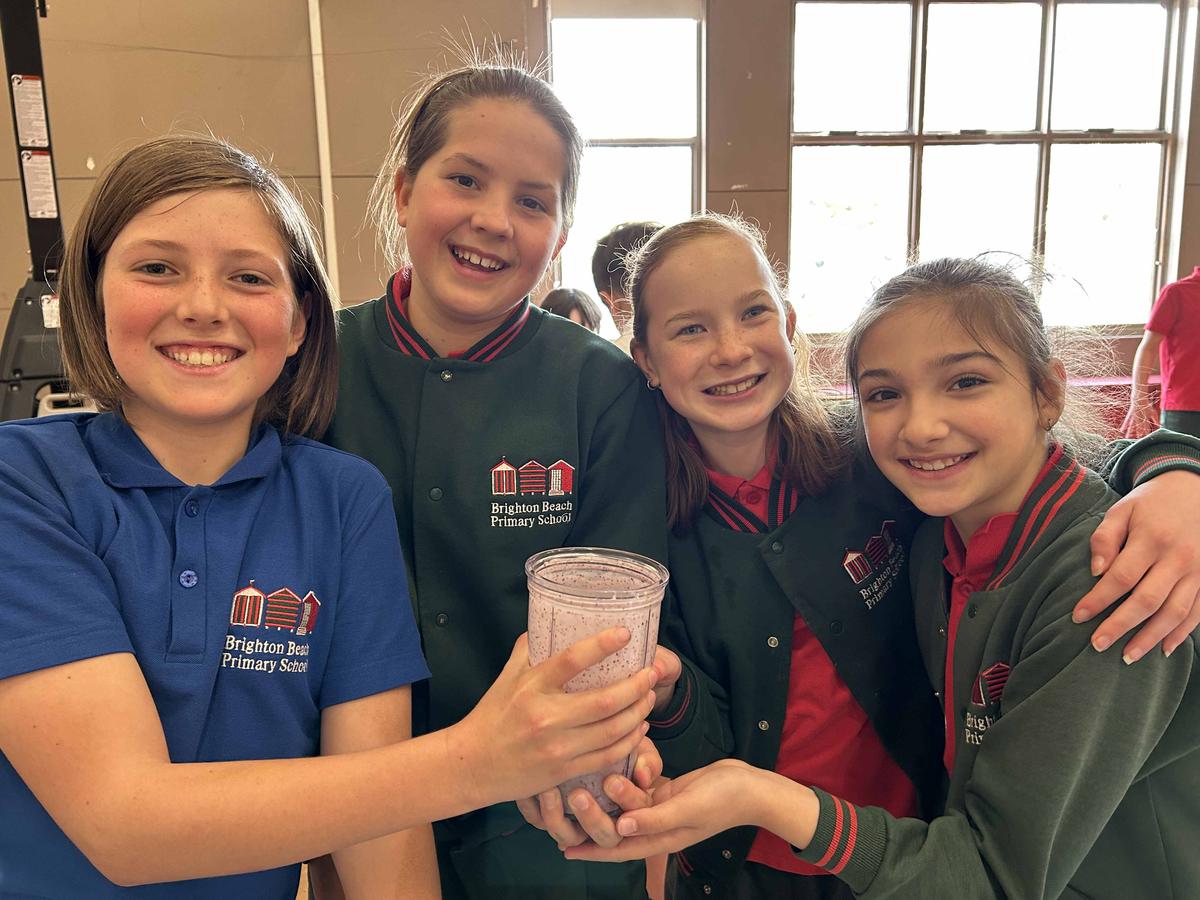









Grade 2 at Scienceworks
Grade 2 students visited science works to learn more about the physics of force, enjoying demonstrations and exploring the interactive exhibits.
